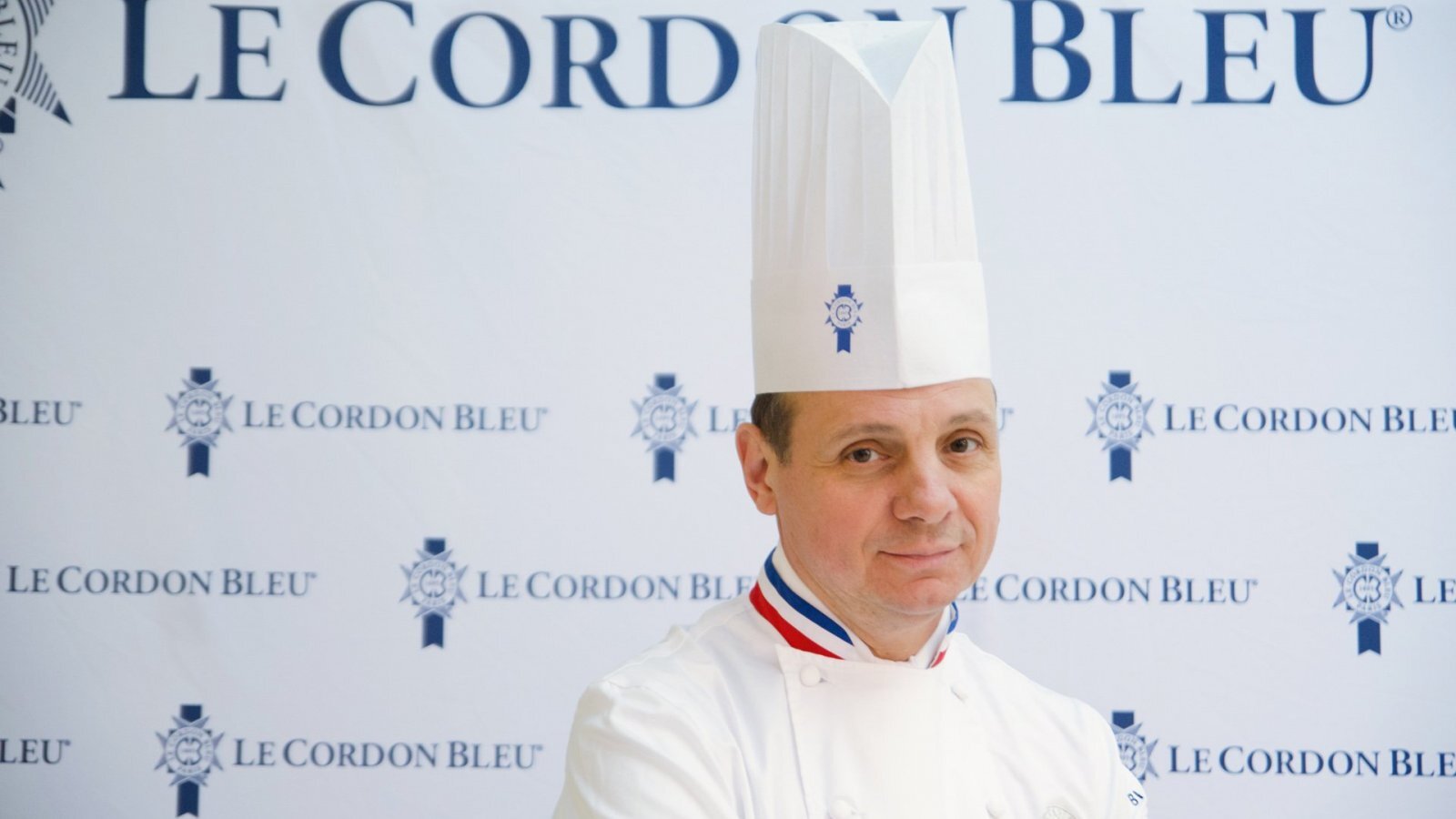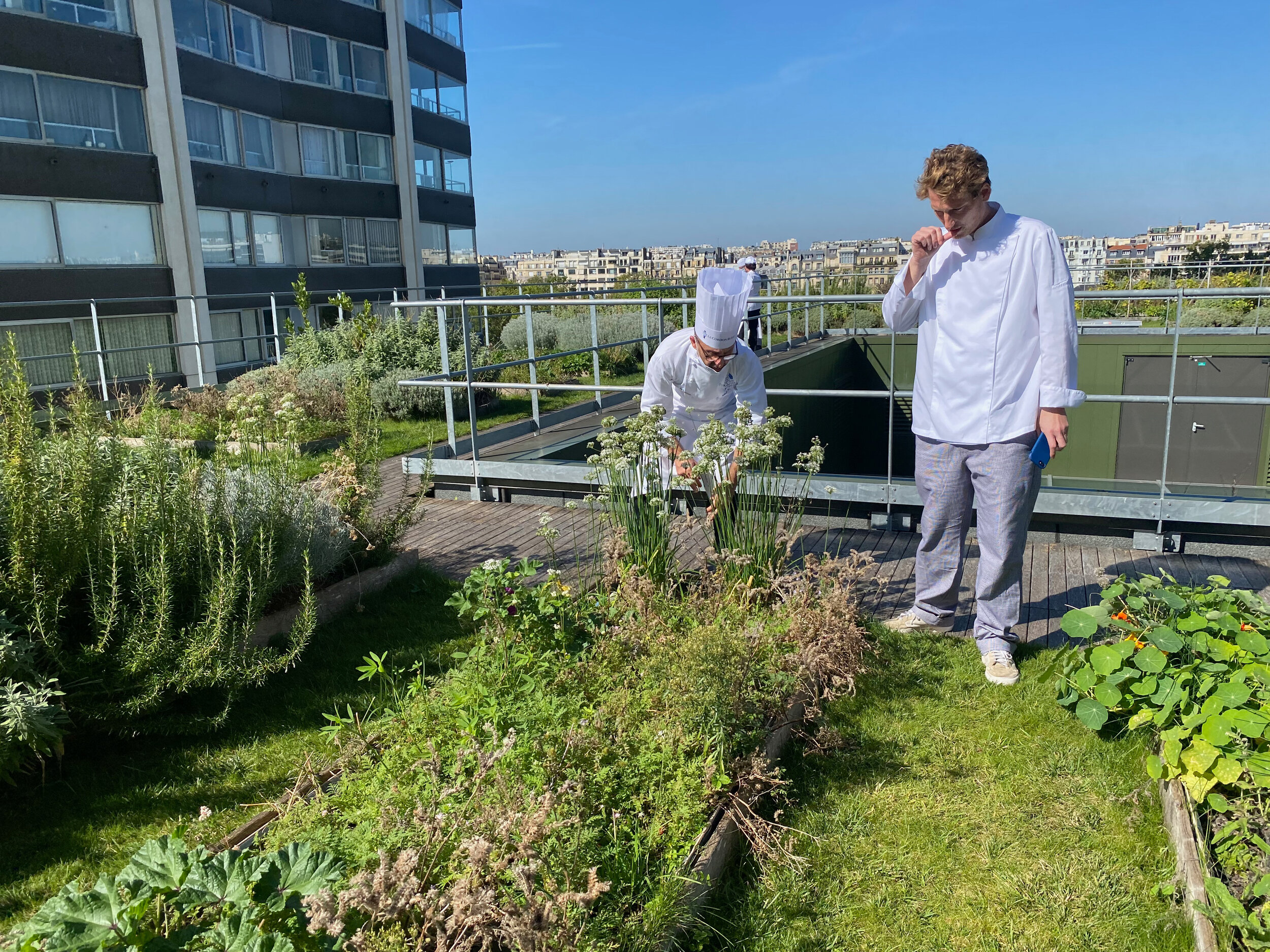How to harvest a carrot - Chef Eric Briffard
Lessons by the headmaster of Le Cordon Bleu | ** Eric Briffard
In 'Chefs who do it differently', a different international chef is always in the spotlight. A chef who is a pioneer in the field of sustainability, by dealing in a different way with what nature has to offer.This time: Eric Briffard.
Chef Eric Briffard, executive Chef Le Cordon Bleu Paris en M.O.F.
The world has changed, I had to change.
“Our students come from all over the world. Many of them have never harvested a carrot or seen an onion bloom,” said Eric Briffard, the Executive Chef and Culinary Arts Director of Le Cordon Bleu, one of the largest culinary training institutes in the world with 20 locations. We talk about the vegetable garden he had built on the roof of the Paris Institute.
Started as a fourteen-year-old assistant as an apprentice in Burgundy. At 28, as Chef to the Royal Park Hotel's restaurant, Palazzo, in Tokyo. Back in Paris, Chef Briffard became Joel Rebluchon's right-hand man at Le Jamin. As the youngest Chef in Paris, he cooked for Le Régence two stars each, repeated that at Les Élysées du Vernet, and for a third time at Le Cinq, in the George V Four Seasons Hotel. And now the 'head master' of a 125-year-old culinary institute is on national television praising 'zero-waste' cooking and the difference between waste and trimmings. Waarom? Chef Briffard, a quiet and modest man, takes off the toque he always wears to school. His eyes begin to shine. "The world has changed. I miss the taste of the little wild peaches of my grandparents' land. Where have the beautiful big snails from the vineyard gone? So, I had to change, too."
“In 1976 I entered the master-apprentice system of the Compagnonnage and learned everything in practice. This guild system dates from the fourteenth century and is older than the Freemasons. I started in the big kitchens of the 'palaces' (that's what the restaurants of the big hotels in Paris are called). It was very gourmet, pretentious and really too much. Tailored to the amount of food my grandparents, who were farmers, ate. They did physical work all day long. In Japan, I learned to make pure and simple and more digestible dishes”.
Fresh fish
Chef Briffard with the brigade of George V
"After that, I started developing my own style. For consistent quality, I always ordered the same fish, cut in the same way. When I complained that the fish was not fresh, the fishmonger said it was my own fault. 'You have to work with the products that the seasons provide, instead of demanding the same products every day. Go talk to the fishermen, the farmers, the growers and the brewers', he said. It clicked in my head, set the same quality requirements for fruit and vegetables as for your game and meat. Farm fresh from the ground, no pesticides, harvested a few hours ago."
It is motivational to share my knowledge all over the world
The symbol of the Campognonnage stands for 'Overture du esprit en correction du vue' (open mind and a correction of your field of view). That is now my role, to train the next generations of chefs at an international level to have a respect for nature. I reach more people in this way than in a starred establishment."
The roof garden was laid out in 2016 by Ecovegetal, it is 800m2 on the banks of the Seine with 52 plant beds, 1534 herb plants, 1026 fruit and vegetable trees, many seedlings and beehives. The Chefs let the students get to know and taste herbs and plants there. Nothing is wasted, the fruit and vegetable trimmings are collected for compost. There is a lesson devoted to creating your own kitchen garden.
Chef Eric Briffard met oesters, Sheila met rabarber
“Most students have never seen a carrot being freshly harvested. That gives them awareness and a respect for the ingredients they cook with.” “Apply the techniques you learn at school to the land where you live and work. We have experienced mad cow disease, bird flu and other consequences of intensive farming and ranching. A Chef now must know exactly where your product comes from and the conditions in which it was grown, bred and lived. Meat from an animal that has experienced no stress and has been able to live freely is much tastier.
Chef Williams Caussimon in the rooftop garden, Le Cordon Bleu in Parijs
Verschenen op www.foodinspiration.nl - October 1, 2021



